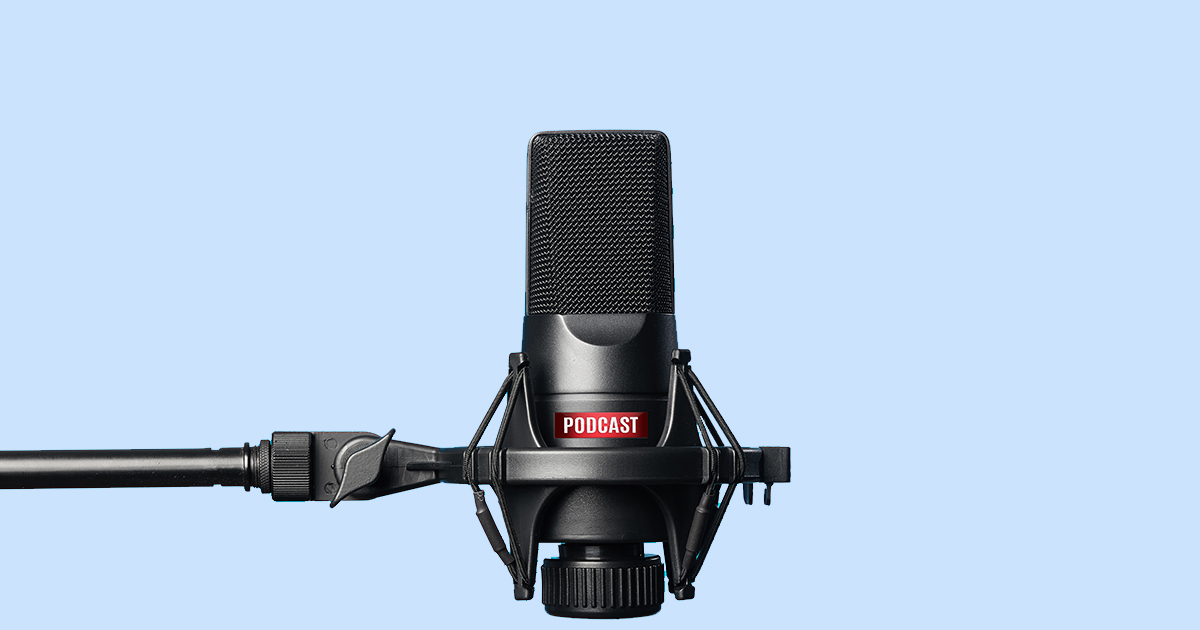The coming year is set to be a year of Transformation. While the last year was filled with unprecedented challenges that almost forced us to adapt, this year will see most organizations put their lessons learnt into action.
With the spotlight on organizational transformation, we must address some questions. What are the forces driving change in modern organizations today? How should organizations measure and analyze the efficacy of strategies to support change? To explore the answers to these and more, Eric Rodgers, Executive Vice-President, Managed Learning Services, Infopro Learning and David Wilson, the Founder and CEO of Fosway Group, come together for an insightful podcast. Along with Nolan Hout, Vice President, Marketing of Infopro Learning, the session seeks answers to the burning questions that most organizations have around organizational transformation and highlights the contribution of L&D to drive it to success.
Listen to the Podcast to learn more:
Question:
How do we measure and analyze the efficacy of our strategies to support change?
Expert profile:

Eric W. Rodgers, Executive Vice-President, Managed Learning Services, Infopro Learning – With 30+ years of rich global experience across multiple industries, Eric helps L&D leaders drive learning strategies, performance consulting, talent solutioning and much more.

David Wilson, Founder and CEO of Fosway group – Europe’s and one of the World’s leading HR industry analysts, providing leading research and insights for next gen HR talent and learning.

Nolan Hout, Vice President of Marketing of Infopro Learning – A seasoned marketing professional with experience in every avenue of marketing including strategy, digital marketing and more.
An excerpt of the discussion follows:
Nolan: Hello, everyone, and welcome to the podcast today. The podcast topic is organizational transformation, and how that can drive business outcomes. Joining us in the podcast today, we have Eric Rodgers from Infopro Learning. Eric has over three decades of experience in corporate training and learning landscape. He has invested most of this time in implementing large scale training outsourcing projects for companies around the globe.
We also have our guest expert, David Wilson. David joins us from the Fosway group – Europe’s number one analyst and research firm. Fosway Group focuses on all areas of corporate training- from digital learning, learning management systems, and everything in between.
To kick us off, the first question is to understand what are the forces that you see driving change in these modern organizations? We all know that COVID-19 is definitely been the force driving a lot of change but we need to understand that it was more of a catalyst. As a result of that catalyst, what is really driving modern organizations to change the way they’re doing things?
David: Hello and nice to speak to you again. I look forward to the conversation with Eric as well. You stole my answer right there! The reality is that for most organizations, the biggest factor impacting their business, their markets and their employees is the COVID pandemic.
I think its interesting to note that some of the trends that have come up, were predating the pandemic. Most particularly, of course, is the digital-first approach that most organizations have embraced. There was already an increasing pressure in the background for this approach. But with the pandemic, pretty much overnight, most businesses had to become digital.
We have been doing research around this for the last five or six years and typically we find that around 70% of companies in in progress with some form of digital transformation, including L&D and HR as well. This number became almost a hundred percent when everything stopped being face to face and went online. L&D vendors are talking about 200% to 300% increase in the utilization of their platforms for digital platforms for learning. So that is a massive transition. It has also impacted corporate investments well. And 95% of the companies in our research have said it is not going to go back to what it was like before.
The other thing I’d also want to highlight here is around organizational agility. We’ve been tracking this trend for a long time. And it has been an area of focus for many organizations and there have been some concerted efforts for the same as well. And again, with the pandemic, business agility became the number one driver for almost everybody who is thinking beyond basic survival!
We have also seen a lot of companies focusing on things like talent marketplaces. They are trying to allocate the resources they have available and respond faster to the new challenges or new requirements.
Nolan: How are organizations making long term changes to the way that they’re running their business? Do you think the “remote workplace” trend that we’re starting to see, is that something that organizations are going to stick with? Or do you think that that will slowly come back to a traditional corporate in the office environment?
David: We’ve heard quite a lot of noise around this. Certain companies are talking about moving towards an at-home working model and while some are starting to resume going to offices.
But we are still in the pandemic. We are still not clear about how things are going to look in the coming months of 2021. However strong the rhetoric is around the remote workplace model; I do think it is hard to create an effective business culture and sustain that on a purely remote basis. So, some organizations are adopting it while reflecting on short term realism. Others are driven by other motives like cost reduction in office premises and so on.
I believe, we are not going to stick in this current mode for much longer now. We will swing back partly, but it may never be back to where we were before – in the next few years. We’re definitely face-to-face with digital transformation changes and that will stick – within bricks and mortar offices as well as remote workplaces.
Nolan: Eric, I would love to get your take on now. What are some of the forces that you are seeing that are really driving organizational change?
Eric : That’s it’s an excellent question. I see the voracious appetite for change. The amount of change that surrounding our entire industry is just amazing. With electric vehicles, health monitoring devices that you now wear on your watch, to the lights in your home that you control from your Wi Fi, to how we consume entertainment – all aspects of our lives have been completely changed, and they continue to change.
And, to bring the focus back to the learners – digital transformation is clearly one of the things that has impacted so many of the organizations and it has impacted L&D as well. I think “strategy” needs to come into play a lot. We are still a very reactionary industry – that is the learning industry itself. And I would love to see us evolve or continue to move forward with employing more of a learning strategy.
In my talks with a US based analyst earlier this month, one of the things that they cited was as little as only 10% of most learning organizations are really deploying some form of a learning strategy. Most are just reacting, and I think that echoes what David was saying. We find ourselves in a reactionary mode. We are trying to break that cycle, and hopefully, we can move forward.
Nolan: Are you seeing a different approach or mindset, to how organizations are starting to approach their outsourcing strategies?
David: I think most organizations at the moment are trying to just keep the lights on in terms of digital transformation. But some are fast realizing that this approach of sticking to the basics, is not enough. So rather than lowest common denominator digital solutions, and basic zoom meetings, they need to really understand how to deliver impact in a more strategic way. And how they can support high value learning, not just basic learning.
L&D has been a world, driven by face-to-face workshops, and maybe some basic-level learning courses. That approach just does not work, and it is becoming more evident that organizations do not have the skills internally to rise above that.
L&D has been an order-taker for most of the last 30 years, and it has not strategically driven very much at all. L&D now has to recalibrate its relationship with the business – so that it is a driver of values, rather than as a transactional deliverer. We can certainly expect to see organizations develop a more sophisticated approach. And, I think that’s the opportunity for managed learning and outsourcing – to provide transformational capability, in a way that really does align with the needs of the organizations and delivers a lot of cumulative micro value as well as a lot of macro value.
Nolan: How have outsourcing strategies changed or morphed over the last year? Do you project that they stay the same or change?
Eric: The last 10 to 12 months, everybody has been trying to keep the lights on and survive. Organizations have embraced the pandemic impact and made rapid shifts as well as changes. Pragmatically speaking, it was sufficient to make sure they could tick only certain boxes in terms of digital transformation. But now they are finding themselves where it looks like there’s light at the end of the tunnel.
For years and years and years, we have heard the digital transformation discussion. But we always had a quick and reliable excuse as to why we could not do it. Maybe it was the budget, maybe it was the digital backbone or our technology infrastructure. But now, business do not want to just survive, they have got to get their legs back underneath them. That means they must be able to scale and not give excuses to avoid it! I do not want to call it outsourcing anymore. I really want to move it towards co-sourcing, where they can come alongside with a learning partner that can add scalability to them and help them grow.
While they are going to have to adjust for that scale, they will also have to be timid about bringing that infrastructure cost on. And having a partner, that can provide them the ease of flipping a switch, turning that demand on and off at their leisure, is really very attractive.
And I loved what David said about transformational alignment, as they are going through this transformation process. For many of them, it has just been very arduous and painful. But coming alongside with someone who has the expertise and experience in the learning area and can bring different solutions – will definitely assist them with transformation.
And how does it align to our overarching business demands? And how do we make sure that the outcomes that learning provides is directly in sync with what the business demand? I think we have got an opportunity in 2021, where a lot of organizations are going to utilize this opportunity. And I’m hoping that they’re going to use that to review where we are, where do we want to be and how do we accomplish that?
Nolan: What type of business outcomes do you think we expect to see?
Eric: There are a lot of different ways to look at it, I will try to sum it up in four key points.
The first is, I would almost call it digital transformation 2.0. The digital transformation is occurring inside of the learning community, and COVID-19 has driven that. But now we must focus on how do we increase the efficacy of this digital transformation. And that blends very much into another point, which is surrounding the learner experience.
Especially when you look at the speed of business, there must be a lot more focus around a learner’s experience and how to create that – with any modality. Are your learners visual learners, auditory learners or kinesthetic or tactile? With online learning, we have lost most of the kinesthesia associated with any type of learning, because we are doing it through a monitor or a phone. And there’s very little ability to get any tactile out of that. With auditory and visual learning, are we able to focus on learner experience? I think there are some real opportunities that a lot of organizations will focus on changing what they what they did in 2020, to optimise that experience.
And that kind of leads to one of my last two points – talent management. We were already working on that because of the baby boomer generation is fast exiting the workforce. A lot more people are switching jobs, resulting in a lot of shifts in employment status. So, you get down to the very basic question of “what talent is actually going to gravitate to your organization”?
It’s mission critical, that you have a learning centric organization. And I think that’s going to be very, very critical, critical to our talent management strategies.
And to come to my fourth key point – In 2021, organizations must have some strategic alignment. Organizations made a lot of changes in the past year. They must reflect on those and with that reflection, set out a map for the journey going forward.
Nolan: What is the ROI that a company can expect as the payoff for investing a certain amount in making strategic shifts for transformation?
Eric: The return on investment is significant. But it really depends on a couple different things. First, do you have the culture that is designed to perform good analytical measurement? And do you understand what your baselines are, for that performance to begin with?
To assess whether the impact was good or not, you actually need something to compare it against, in order to effectively measure the rate of change, or the efficacy of that change. And so
if the organizations have started to establish some form of measurement and analytics, then the return on investment can be quite significant.
For instance, we are working with a large global pharmaceutical, that in managed to gain measurable ROI in just a couple years. Their training expenditure measured in “cost-per-learner” has decreased from $200 per person, to $70. This is based on a whole series of changes that we worked with them, partnering on ways to increase the efficacy while reducing incurring costs. But to their credit, they did the homework of establishing that baseline – the total true cost of training per learner.
Most organizations share the need to create a learning solution or a training program, and the learning organization does exactly that – provides the necessary courseware. Maybe they can also provide the talent that can deliver it, or even look at curriculum design and see if that works. But what if we do not look at it, just from the standpoint of a transaction?
How about we put some skin in the game and say, we will create demand generation, so that the Client will pay us for the courses that are required or requested by the end-users? That kind of return on investment is substantial, because we have seen that Clients are able to derive a lot more responsiveness in this manner. And we are able to demonstrate to them not just cost savings but an increased effectiveness as well.
Nolan: So, how we are able to measure and analyze the new strategies that are paying off for organizations?
David: From Fosway’ s point of view, we’re hugely interested in this, have been for the past 20 years and are constantly looking for more insights. And unfortunately, when you look at most organizations and ask how they measure the value or impact from a learning point of view, the answer is simple. It is done very shortsightedly or not at all.
We need to look at how effective our learning investment is, or how impactful different learning channels are and so on. The pandemic forced us to take a back step and focus on just keeping the lights on – that was our measure of success. Just being able to reach people and get them involved. Help them to cope and fruitfully work from home. We now need to move ahead and form stronger strategies that not just help them cope but push them to perform.
Nolan: To take the example of Netflix – they have focused less on “smiley sheets” – they show recommendations as per the viewers past choices and not the actual ratings. There are similar conversations around learning management systems – where the focus is on performance rather than any other perceived need. What is your take on this?
David: That is an interesting comparison. But I feel the difference is that with Netflix, the audience who likes “watching” a Thriller, is not expected to perform the stunts shown in the movie! From a learning perspective, what the learner does after getting the recommendation, is by far the
most important factor to consider. Efficacy of learning is the most important factor to consider – how much of that is being translated to performance or even, at a higher level, how much is the employee able to contribute to the overall goal of the organization. We need to build a model like this – that pushes people to perform and show results.
Historically, L&D has been very poor at that and very reluctant to have deeper discussions, over and above the basic level of learning analysis. This is the time for us to recalibrate – in terms of newer learning strategies, learning models, choosing how to go about Learning and assessing the outcome of all these as well.
Eric: One of the things that is meaningful for me and will be for a lot of folks from the learning industry is that Learning must be thought about with a purpose in mind. Much like an organization itself. Infopro Learning works on the purpose of “Unlocking Potential”. Similarly, learning organizations must take the time now, pause and figure out their “purpose” to be relevant, to truly make an impact.
Nolan: Thanks, Eric Rodgers, and David Wilson for this very interesting discourse. We have been sharing our insights on similar podcasts and hope to continue our efforts to bring thought leaders from the learning industry together. Keep watching this space for more!



